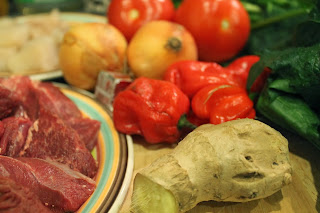Here is a summary of the books I read:
Chasing the Devil: On Foot through Africa's Killing Fields - Tim Butcher, 2010
Journey without Maps - Graham Greene, 1936
I've blogged about these two books already and you can read my blog post here.
Lonely Planet West Africa - 2009 edition. I like reading old copies of guidebooks, such as the Lonely Planet series, as they are quite often a rich source of ideas and point me in the direction of resources which help me understand the place I'm blogging about.
There are very few guidebooks specifically about Liberia, but Lonely Planet West Africa has a lot of general information about the region and I made lots of notes and learned about other West African countries, such as Guinea-Bissau, Nigeria and Cameroon. No doubt these notes will help, whenever I blog about these other countries, at some point in the future.
The Rain and the Night - William Sankawulo, 1979. As well as being a writer, William Sankowulo served as Liberia's leader, during the interim government of 1995-96. He seems to have been somewhat of a political survivor, having been part of the old regime under Tolbert, as well as the new regime under Samuel Doe.
The Rain and the Night is an interesting novel which deals with the challenges faced by a new chief, Kortuma, after his father passes away. A key message of the novel is that, whilst tribes must sometimes go to war to defend their honour, war is generally bad for the country and the tribes must unite and work together for the general prosperity of their people.
I found Sankawulo's depiction of women interesting - women are feared and respected by their men and Kortuma has a refreshingly modern view on the importance of understanding and listening to women, particularly in relation to his wives.
 |
| Books I read during my research on Liberia |
It's a great story - more of a novella than a novel. Like Sankawulo's book, it also deals with the relationship between men and women, although this time, the relationship is a more hostile one. In Moore's Cassava Patch, the men are hard-working and innocent, the women are conniving and manipulative. In the words of one of the male characters:
The secrets of a woman are deeper than the bottom of hell.
Despite the undercurrent of 'gender war', I really enjoyed reading Murder in the Cassava Patch - the story is well-told and I learned a lot about Liberia and the everyday lives of the people who live there.
 |
| Liberian Women attending Math and Literacy class by UN photo |
I read a lot about the various civil wars in Liberia but Steinberg's book, telling the stories of two Liberian immigrants, helped me contextualise the bigger picture and see a more real, perhaps more personal, version of events. The book was well-researched and well-written, although I wasn't tearing through the pages, as I usually do and I can't help feeling there was something missing.
The Darling - Russell Banks, 2005. I absolutely loved this novel and I'm quite interested in reading more of Russell Banks books, as this was the first time I'd ever heard of him. Written from a 'western' perspective, the novel follows the story of a young (white) US woman - a radical, on the FBI's most-wanted list because of her anti-government activities, as part of the Weathermen underground movement of the 1970's - as she flees to Liberia, marries a Minister in Samuel Doe's government and raises three boys, who later become child soldiers.
I found the story thrilling, sad, enlightening and engaging in equal measure and, whilst the political background of the novel wasn't new to me, I enjoyed seeing a fictionalised account, both of the civil wars in Liberia and the changing nature of the radical left in the United States. Highly recommended!
And the ones that got away!
As usual, I didn't have time to read everything that I would like to have read in relation to Liberia. In case you have more time than me to explore Liberia, here is a list of the other books I would like to have read.
 |
| View inside Liberian Magisterial Court by UN photo |
The Mask of Anarchy: Roots of Liberia's Civil War: The Destruction of Liberia and the Religious Dimension of an African Civil War - Stephen Ellis, 1999.
The House at Sugar Beach: In Search of a Lost African Childhood - Helene Cooper, 2009.
This Child will be Great: Memoir of a Remarkable Life by Africa's First Woman President - Ellen Johnson Sirleaf and Kim McLarin, 2010 - although I can't help feeling a little bit cynical about this type of political (auto)biography.
Image credits:
These images have been shared by UN photo on their flickr account - the UN has shared these images using the Creative Commons license, so they can foster a public understanding of the UN's work and goals. You can see more UN photos (and learn more about their work) on their photo stream.




















